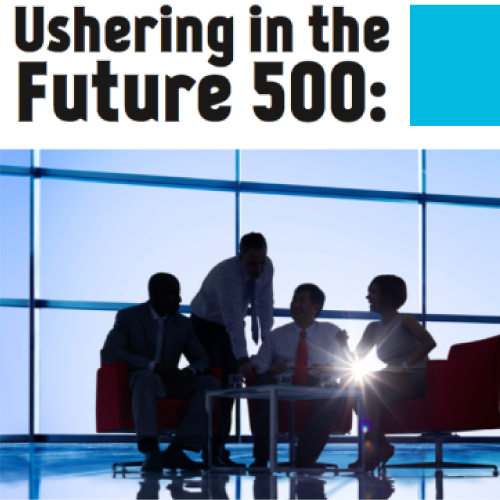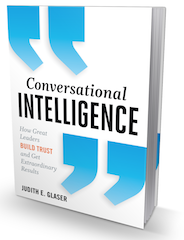Executive Briefings: Engage and Empower Your People to Ignite Sales, the Barefoot Spirit
Executive Briefings is an online event with a similar kind of context that C-Suite has for physical events. During one of our recent Briefings, Bonnie Harvey and Michael Houlihan of Barefoot Wine joined us to discuss how to engage and empower your employees with a sales centric culture.
Barefoot Wine is currently a top global brand. It’s become known as the Levi Strauss of American wine. But it represents a lot more than just a wine label. It truly represents success. Success of a small start-up team that began in the laundry room and wound up in the board room of one of the world’s largest wine companies. Starting with no money and no knowledge of their industry, Michael Houlihan and Bonnie Harvey bootstrapped a novelty brand into a top global icon. Doesn’t happen very often, and they did it. Relying on an entrepreneurial culture, they overcame formidable challenges in a highly competitive and controlled wine industry. They received the industry’s coveted Trend Setter, Fast Track Growth Brand, and Hot Brand awards for a number of years. They took this experience and created the New York Times Best Seller, The Barefoot Spirit: How Hardship Hustle, and Heart Built America’s #1 Wine Brand. The book details the journey into success – from a humble beginning to a nationwide blockbuster brand.
Since selling the company to E&J Gallo, Michael and Bonnie have been actively sharing their expertise. They’re speaking internationally. They’re corporate trainers. They’re contributors to many publications like Forbes, Inc., Investor’s Daily, and others. They’ve delivered keynotes at the World Conference on Entrepreneurship in Dublin, and at our own C-Suite Conference in Marina Del Ray in 2014. They’ve recently released a new book, The Entrepreneurial Culture, 23 Ways to Engage and Empower Your People. They offer several online courses, including “Skyrocket Sales and Engagement,” and “Spend Less-Monetize Faster with the Entrepreneur’s GPS”
First off, I’d like to ask how you both got into a business that you didn’t know anything about?
MH: Well, you know they say follow your passion, but we followed our opportunity passionately. It’s a little bit different. Bonnie had a client who wasn’t getting paid for his grapes. He was a grape-grower in the Sonoma County wine country of California. She said, “Maybe you can help?” I went over to the large winery that owed the grower for his grapes, which is now called Francis Ford Coppola Winery. When I got there, they had just declared bankruptcy. Meaning, they didn’t have to pay their creditors.
As I’m there and looking around, I see a row of tanks and a big bottling machine. I say, “Hey, wait a minute. If you guys can’t pay us in cash, what do you think about giving us wine in bulk and bottling services to pay off the debt?” And they said, “Great!” I went back to Bonnie, and I told her that I thought I had got it settled. However, this was a big debt to pay off. But now all we have is wine and bottling services. And she says:
BH: Well, now we’ve got a different kind of a problem. How do we turn this wine and bottling services into cash so we can pay the bills? That’s how Michael and I got in to this fix to start with. The grower was unable to take over another business. He had a full-time job as a wine-maker, in addition to having about 100 acres of vineyard. Michael and I kind of looked at each other and said, “I guess we’ll do it then!” Ignorance is bliss! We had no idea what we were getting in to.
I’ve backed myself into these kinds of things in the past, and it’s very educational. You’re breaking in to a business that’s highly controlled. It’s got a structure that everybody says, “Well this is just the way things are,” and you guys were able to break out of that, because you didn’t follow the rules. How did you step back and find a new approach that nobody else was doing?
BH: Well, first of all, we didn’t know the rules. That’s a good place to start, as it turned out. We went out and started asking a lot of questions. We asked questions of everyone on the production end. We asked people in the retail end, the buyers. We went out and asked consumers. We kind of put together a plan from really more the consumer outlook rather than production outlook.
Also, you looked at your customer being the person who is consuming the wine, not the person who was distributing the wine. A lot of people look at the distribution side, rather than going all the way to the end and the customer themselves, right?
MH: Right. We realized that we weren’t going to get to that customer unless we understood what the distributor wanted, and of course, everybody in the distribution channel wants a different thing, and none of it has to do with wine. However, the end user has a lot to do with wine, and price, and value, so to create that customer experience at the end user, we had to understand the distribution system. We did what we call “make friends in low places.” We talked to fork-lift operators. We talked to truckers. We talked to people who stock shelves in grocery stores. These are not necessarily the white collar folks that you would think you would go to for information. But what we learned is what was really happening in the real world at the street level. And because we did, we were able to put a package and a product together that got through the distribution system to the general public, and stayed in stock, which is really important.
Well you had some innovations on the distribution side to make it easy to assure the right product was in the right place. What did you do there?
MH: The main thing in retail distribution is that you’re only as good as your stock. If you’re selling a real product and it’s sold in retail, it has to be in stock. The worst customer experience is they love your product, but it’s out of stock. We had a situation in Minnesota where we couldn’t understand why we were consistently getting missed deliveries. We flew there, and we found out that it wasn’t stocked in the store even though it was authorized.
So we went to the distributor and asked why the product wasn’t delivered. We heard replies like, “That’s not our problem. That must be Ed. He’s in the back room. You have to go talk to him.” So we go to the warehouse, and we talk to Ed. He says, “No, you have to talk to Joey. He comes at midnight. He runs the forklift, and he picks the products off of the shelves in the warehouse to ship out to the retailers.”
I waited until midnight to talk to Joey. He says, “Get up on that forklift!” I said, “Okay” and I got up. He says, “What do you see?” I said, “Well, I see a big warehouse.” He says, “What do you think about the lighting?” I said, “It’s terrible. I can’t see anything.” He says, “That’s right. Read the label on that box over there.” I said, “Well, I can’t read it. Do you want us to make the labels larger?” He says, “No. Why don’t you make each box of each type of product that you have a different color. The whole box a different color.”
And so we color coded everything at Barefoot, and it not only reduced our missed deliveries and increased our in-stocks, but it also was a lot of fun. Each retail store would build lots of colorful stacks with our new boxes.
It seems like this might be a place where you saw that everybody who is on the street, from the forklift operator to the person delivering the stuff, is critical in the customer conversation. You created a culture within Barefoot that was very different. Let’s talk about the culture you created out of these experiences you had, and how it was different.
BH: We believed that the pyramid structure that most companies are in, really didn’t work because you’ve got the CEO and the VP on top and everyone else is below them and they take orders from the top. Well, we really wanted to support our customer, and we said, “How can you put the customer on top, when you put sales on the bottom?”
We thought, instead of having this pyramid structure, we would have a two-division company. The two-division company puts the customer on top, followed by sales, and everyone who is not in sales was in the sales-support division. So the accountant, everyone in production, the receptionist, the vice president, and even the president are all in sales-support. That was our main difference. That’s how we really distinguished ourselves as a company, was through the two-division company. The two divisions are sales and sales-support.
In order for that really to work, the sales division had to tell marketing and production the feedback that they were getting from customers. They were in touch with customers on a daily basis, and they knew what was going on at the retail level and the distribution level. Those two are our customers: the retailer and the distributor. They would get that information back to our company, and we would respond in production and marketing. That’s how we put the customer on top.
That’s interesting. How do you have a conversation with an accountant, or a receptionist, or somebody who’s in tech support, and explain to them that they are now sales-support? How do you help them see the picture of how that all works?
MH: We had a real situation where our accountant was giving us a lot of push back and saying, “Hey, I’m an accountant. I crunch numbers. I belong to the accounting association. I go to the accounting events. I’m an accountant. I don’t have anything to do with sales. How can I possibly affect sales?” We said, “You’re going to figure it out because your bonus is going to be based on sales.”
Sure enough, our salesperson gets an appointment with Mr. Big down in Florida for a big chain store. It comes at 5:00 at night for 8:00 the next morning. The guy has no time to prepare. He tells the accountant, “I need these numbers to prove to this buyer tomorrow morning at 8 that we’re selling like crazy in the surrounding states, and we need him to jump on the bandwagon. What can you do for me?” It’s 6:00 in the morning, and our salesperson had all of those numbers on his computer, and he was able to review them, print them out, and put a presentation together. He made the sale at 8:00. That’s an example of how somebody as obscure as an accountant can affect sales. Now, in a normal pyramid structure, the accountant would say, “Hey, did this go through proper channels? I’ve got it in my inbox, and I’ll get to it in a week or two, but I’ve got other priorities.” In other words, he doesn’t take a real interest in sales, per se. He’s more interested in getting his workload done. Our accountant stayed up all night to get those numbers to him.
I see how when you build a culture from the ground up, which is what you did with Barefoot, you’re able to bring this perspective because you’re creating the mindset from the ground up. What about a company that’s a traditional company? It’s got the pyramid structure. How do you help them see why this is valuable, and more importantly, how do you help them transition from the current structure to one of the two-division company structure?
MH: There’s quite a few ways to do it. I think the simple answer is they have to formalize communications between sales and customer service to marketing and production. A lot of pyramid structures like to tell you that sales is part of marketing, but marketing is actually in the corporate building and sales is outside. There’s this physical division in culture between the people you see at lunch and the people that come in once a month. We think that one of the things that you can do besides having these formal connections between these departments within the pyramid silo structure is the money map.
BH: The real idea of the money map is to help new hires understand where the money that goes into their paychecks, their bonuses and all their benefits comes from. So they don’t come to you and say, “Well I’ve been here for two years. I want a raise.” The way you get a raise is you increase the amount of money that goes into the pot that goes to everybody’s salary and benefits. And that’s why we created the money map. So no one thought we had a big pile of money in the back, and we’d just scoop it up and throw it in your trunk every month.
Now, I suppose that most of your audience already understands where the money comes from. The benefit that any company can have by creating their own money map is to let the new hires understand where the money comes from. It comes from the end-user, which is in the community in our case. You have the customer who is going shopping. Picking up her product. Giving her money to the clerk. Part of that money goes to overhead. Part of it goes to the wholesaler. Then the money comes in to our company. We’ve only got about half the money that the customer spent going into our company. Then we pay the suppliers, our overhead. We’ve got maybe a buck or less that goes into the big pot of everybody’s salary. If you want to increase that pot, you increase sales. I say if you want someone to do something, put a buck on it. People respond to money. This, the Money Map, is our way of showing you how you can put more bucks in your pocket, and that’s by getting more customers to buy your products.
MH: This money map is going to look different in every company. However, they say when the cement is wet you can move it with a trowel. When it gets hard you need a jackhammer. So you’ve got wet cement when you’re on-boarding people. The question is, what does the trowel look like? What are you giving people? Are you just saying, “Here’s the coffee. If you hurt yourself there’s forms in the office.” Is that your idea of orientation? Or, are you actually telling people all of the steps that your company’s product or service has to go through to get to the general public. A lot of companies say, “No, I’m B2B. This doesn’t affect me.” Well we were B2B. We sold to a wholesaler. We could have said that’s it. No – We found out if we didn’t sell to the retailer for the wholesaler, the wholesaler didn’t reorder. And if we didn’t sell to the general public for the retailer, then the retailer didn’t reorder. So even though we were B2B, we were actually B2B2C. I think that is the realization that you have to get across to your people when they’re hired. It gives them more appreciation for the steps involved, and then as they’re working in their job, they start to see how their job affects this whole supply chain.
It’s interesting because you talked about that from a marketing perspective. B2B or B2C. Those things are collapsing. It’s really B to whoever is in the customer chain. The whole customer chain from you to the person ultimately using this product is who you need to pay attention to. And you did something really innovative, and something around cause marketing which changed in some ways the game in the wine industry.
BH: When we began, we called it worthy cause marketing, because we started so long ago that there wasn’t really a name for what we were doing. We wanted to get the attention of the end users and make them aware of our products. The way we did this was by supporting worthy causes within their community – through local fundraisers and non-profit organizations that were raising funds. We wouldn’t just donate our product, but we would go there and help them set up. We would help them to bring in more clients by providing the non-profit information to the retailer. We could do that by putting signs on our bottles to alert the community about this non-profit organization or event that was taking place.
We would ask for things from the non-profit that cost the non-profit nothing. We would talk to their supporters about why we were supporting this cause, and where they could buy our product within that area. So that was of great interest to the retailer. The retailer appreciated that we were bringing in new shoppers. We’d go to a retailer and say, “There’s a non-profit event that’s taking place a couple blocks from here, and what we would like to do is put this sign that says where to buy Barefoot on the table so the supporters can pick it up. Would you like to be on this list?” The retailers said, “Yeah, I really do appreciate that non-profit, and I do want to be on that list so people can come in and buy the product.” We said, “Great! Where do you want the stack?” That enabled us to get more retailers to take our product.
You’re the epitome of entrepreneurship. Entrepreneurs don’t live by the rules. Entrepreneurs say, “I have a problem and I’ll find a solution. I don’t know how the solution is going to happen there, but we’ll find it out.” You guys continually, over and over again, kept running up against things that looked insurmountable, and you just kept working until you had a solution that worked for both parties.
MH: Yes, we kept going until we found a solution! If you go to www.barefootbonus.com, you are going to receive all the guides that we discussed during this presentation. You’re also going to receive six free chapters from our new book, The Entrepreneurial Culture: 23 Ways to Engage and Empower Your People. We actually wrote this book for this C-Suite. It is outtakes from our New York Times Best Seller, The Barefoot Spirit: How Hardship, Hustle, and Heart Built America’s #1 Wine Brand. We said, let’s just synthesize that out, and put a book together that’s about as thick as one airplane ride so that the C-Suiters can read it and actually cut and paste these ideas into their own corporations. We’re offering, for free, six chapters. We think you’ll enjoy them. We talk about how to build this kind of entrepreneurial culture in a corporation. It’s not impossible, but it requires a different view of things. A different outlook.
*Visit www.barefootbonus.com to download the presentation from this Executive Briefings event.
- [PRESS RELEASE] C-Suite Network™ Expands to Dallas and Announces Game-Changing Partnership with Flex Workspace Solutions - January 9, 2024
- Ushering in the Future 500 – White Paper - September 8, 2022
- Make Candor a Priority - September 8, 2022






